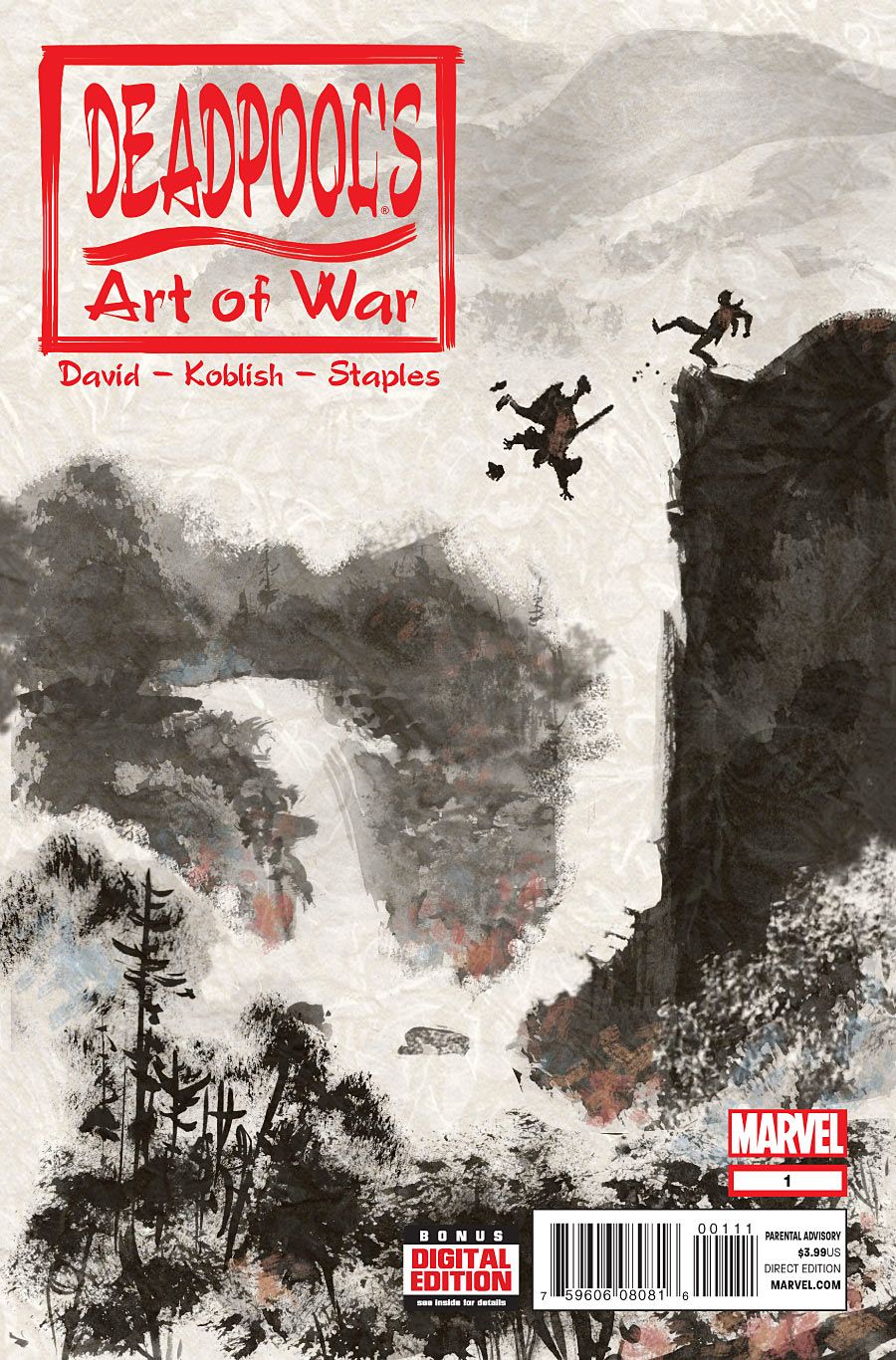In "Deadpool's Art of War" #1 by Peter David and Scott Koblish, Deadpool discovers the classic ancient Chinese military treatise. Deadpool's reaction to finding "The Art of War" is unexpected, as is his convoluted solution to a crowded nonfiction book market.
The story begins quickly and with admirable economy and directness as David introduces Sun Tzu and some of his ideas, and the plot also has two sharp twists in quick succession afterwards.
The best scene of "Deadpool's Art of War" #1 is when Wade storms the office of a publishing house in order to pitch a book idea to a company with the tongue-in-cheek name of Major Publishing. It's over-the-top and ridiculous in the best way. The editor who hears him out is bizarrely (1) willing to hear a pitch from a costumed man walking in off the street and (2) in possession of weapons. David's in-joke wink about all the self-help books based on "The Art of War" is perfect, as anyone who has browsed the business section of a bookstore would know. David's dialogue is also at its sharpest here in the editor's dismissals. Koblish's facial expressions also contribute to a deliciously deadpan finale to the scene.
Wade's chain of reasoning is wildly unsound even at face value. He is seeking out an evil trickster god in order to wage worldwide war, in order to pitch a book about the art of surviving during said war. Conveniently, he forgets that people may be too busy fighting or surviving to buy books. The only reason that any of this flies at all is because it's the kind of crazy thing that Deadpool would do in order to publish. But if Deadpool can read ancient Chinese or find a "transportational gem" that can get him access to the Loki from "Silver Surfer" #4, why does he care about money or being an author? David takes a lot of liberties that are possible because Deadpool often operates outside continuity and because the whole miniseries is an extended joke. The humor works to bandage the plot mechanics together somewhat, but the sheer number of things that don't make sense still demand cognitive leaps by the reader. It's a lot to ask for when the rest of "Deadpool's Art of War" #1 isn't that interesting.
Unfortunately, Major Publishing is there only as a vehicle to take Deadpool to his true destination of Asgard. "The Art of War" becomes just another prop. Its themes are slotted around Loki and Thor instead of vice versa. It would make more sense to structure the story around Chinese folktales or religions, but David opts for the safe choice of Norse mythology since Marvel already has its well-established characters there.
David breaks the fourth wall with two fun in-jokes about Matt Fraction and J. Michael Straczynski, but after Deadpool locates classic-flavor Loki, the plot abruptly becomes more predictable as the usual Loki and Thor dynamics take over. The tone also turns gloomier. With classic-flavor Loki, the bloody betrayals and the heaviness of Ragnarök always loom in the background. Sun Tzu and even Deadpool himself take a back seat, despite David's efforts to inject from epigrams from "The Art of War" into the story.
Koblish's art is more even than David's script. His fight scene panels are cluttered, but his draughtsmanship is sound and he has a strong style. The first few pages are especially enjoyable for his rendering of a dragon and the interior of an imperial throne room. His shading uses zip-a-tone well, and Val Staples' colors play along with a subdued palette of lighter reds and greens. The shading and coloring contribute to an antiqued or retro effect that feels nostalgic and reinforces the setup of a bygone era, but it also undercuts the comic parts of the script, which would come across better with vivid or cartoony colors.
The best parts of "Deadpool's Art of War" are the off-the-wall elements and Wade's bizarre leaps of thought. Koblish's art is also solid, so hopefully in future issues, David can make Loki and Thor's eternal sibling rivalry serve the larger story and themes instead of putting on another tired reenactment of their enmity.

